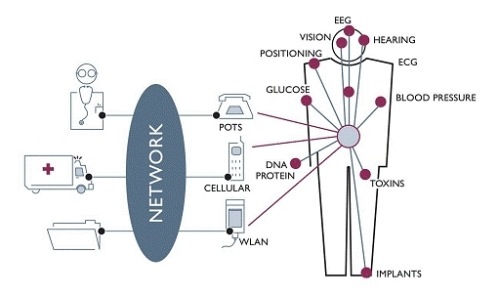FCC gives medical body area networks clean bill of health
June 5, 2012
Electronic health monitoring took a big step forward last week when the U.S. Federal Communications Commission approved spectrum for medical body area networks (MBANs), IEEE Spectrum Tech Talk reports.
The FCC allotted the frequencies between 2360 and 2400 megahertz..
An MBAN is a network of inexpensive disposable sensors worn on, or even implanted in, the body. The sensors monitor various vital signs, such as temperature, blood pressure or glucose levels, and transmit the information to a control device.
The technology holds the promise of getting rid of the myriad wires that tie patients to their hospital beds today — wires that complicate patient care and pose infection risks. The first use of MBANs will likely be in hospitals, but a longer term application could be remote monitoring devices that allow doctors to check on patients at home.
FCC Chairman Julius Genachowski said the decision opened up “tremendous potential to untether patients from tubes and wires, and improve the quality of health care and ensure better outcomes for patients.” He cited estimates predicting that MBAN monitoring could save an average of U.S. $12,000 per patient by decreasing hospital-acquired infections.
Among the other benefits of MBANs:
- The networks can potentially alert doctors to problems before the patient’s condition becomes critical, thus avoiding the need for acute intervention.
- The lack of multiple wires makes it easier for hospital staff to move the patient, and gives the patient more freedom to walk around.
- Hospital personnel or home caregivers can quickly add or remove sensors as medical conditions warrant.
Although MBANs have cleared a major hurdle, it will be at least another year before they hit the market, pending FCC and FDA actions.
